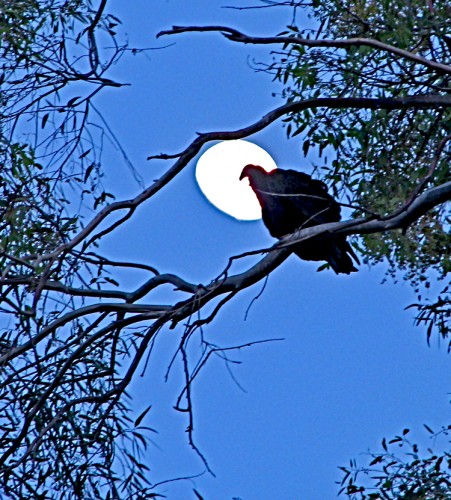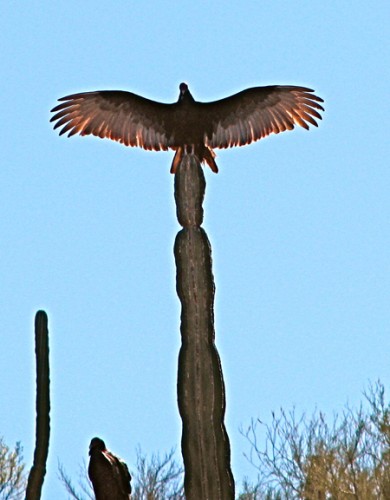Waxing gibbous with vultures
This time of year, the local Turkey Vultures roost on the rocks and in the tall eucalypts’ tops along Queen Creek. By twilight they’ve called it a day, and have found their places, high overhead where they’ll be safe from most predators, dreaming of whatever odiferous carnage vultures dream of. Unlike most hawks, many vultures are gregarious, both at mealtime and bedtime. Sometimes Turkey Vultures roost in such large numbers that if there’s a breeze you can smell them, their plumage exuding a soury-gastric smell I grew familiar with when handling a turkey vulture or two for school-education programs back in the day.
overhead where they’ll be safe from most predators, dreaming of whatever odiferous carnage vultures dream of. Unlike most hawks, many vultures are gregarious, both at mealtime and bedtime. Sometimes Turkey Vultures roost in such large numbers that if there’s a breeze you can smell them, their plumage exuding a soury-gastric smell I grew familiar with when handling a turkey vulture or two for school-education programs back in the day.
 Being creatures of the sunlight — often seen extending their wings to the warming, drying, disinfecting, vitamin producing rays of the sun (left) — vultures are not generally associated with nocturnal celestial bodies the way owls or nightjars are. But, above is a photo of one back-lit by the moon, the gibbous globe behind it looking like a cranium picked as bare of covering as the vulture’s own red, wrinkled scalp. Goodnight, sweet scavenger.
Being creatures of the sunlight — often seen extending their wings to the warming, drying, disinfecting, vitamin producing rays of the sun (left) — vultures are not generally associated with nocturnal celestial bodies the way owls or nightjars are. But, above is a photo of one back-lit by the moon, the gibbous globe behind it looking like a cranium picked as bare of covering as the vulture’s own red, wrinkled scalp. Goodnight, sweet scavenger.
(Both photos E.Shock; top, vulture in eucalyptus with moon, Boyce Thompson Arboretum; bottom, vulture on Cardón in Baja Sur)
